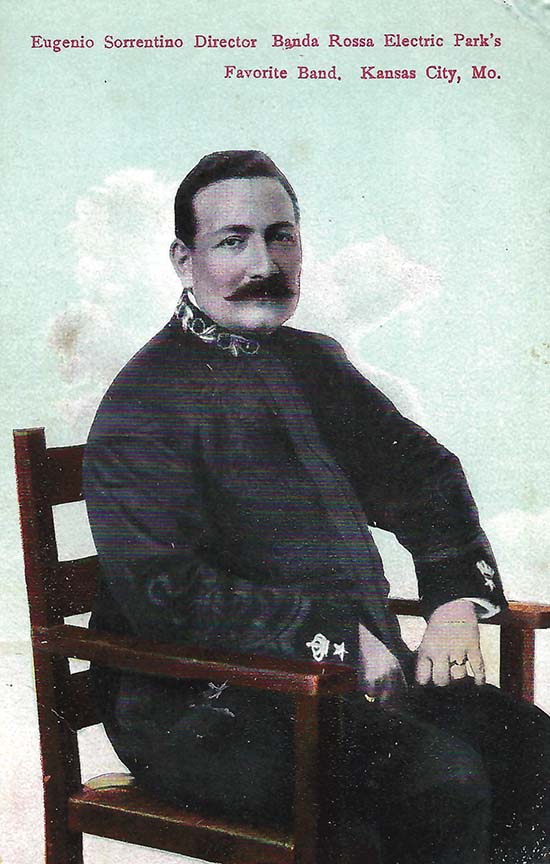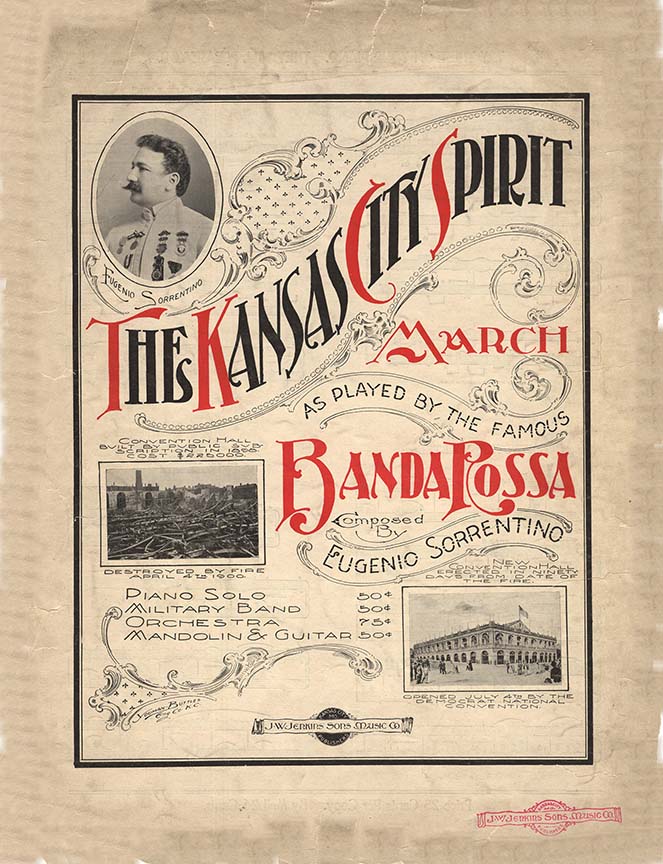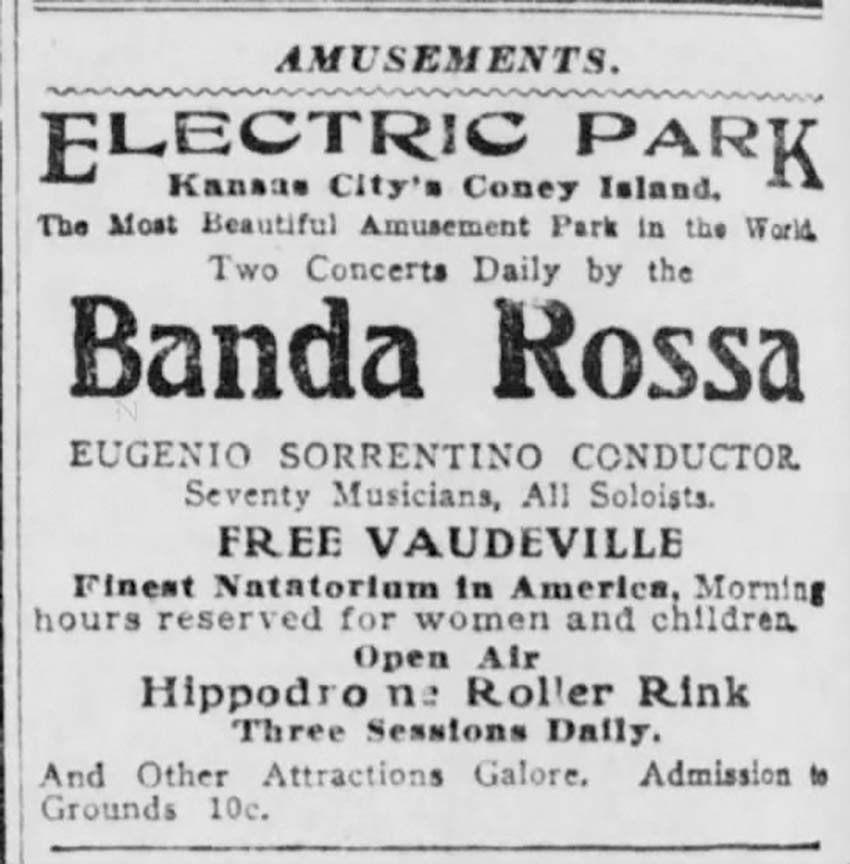
Michael Bushnell
Publisher
This week we celebrate October as Italian Heritage Month by featuring this Electric Park postcard published by I.I. Norton exclusively for Electric Park, showing Eugenio Sorrentino, leader of the Banda Rossa, Electric Park’s favorite band.
Sorrentino, a native of Calabria, Italy, showed a keen interest in music at an early age. His family placed him in the Royal Conservatory of Naples where he graduated with honors.

The Banda Rossa, or the Red Band, grew out of the city of San Severo in South Central Italy where the Society for the Promotion of Music was founded. The society called on Sorrentino in 1889 to lead the Banda Rossa shortly after his graduation from the Academy. Sorrentino replaced Ferdinando del Re, the band’s original conductor.
Almost immediately, the band’s reputation began to spread past the borders of the province of Puglia where San Severo is located. In 1892 the Banda Rossa won the gold medal over 64 other bands in “general excellence of technique and interpretation” at the Columbus Exposition in Genoa, Italy.

Banda Rossa, toured extensively in the United States, predominantly in the Midwest. He was a regular at Heim’s Electric Park and spent leisure time with the Heim brothers at their fashionable, upscale Benton Boulevard homes. In 1914, Sorrentino was commissioned to compose a piece of music dedicated to Electric Park. The result was Heim’s Electric Park March, dedicated to Mr. & Mrs. M.G. Heim.
Sorrentino also composed the Kansas City Spirit March in 1901, which he dedicated to the “energy and enterprise of the citizens of Kansas City,” following the disastrous fire that destroyed Convention Hall shortly before the Democratic convention in 1900. The city rallied and rebuilt the hall in less than 90 days, and the convention, at which William Jennings Bryan was nominated to run against incumbent William McKinley, went off without a hitch.

Sorrentino performed a special concert at Convention Hall, where the Banda Rossa played the newly composed march. After the performance, the Jaccard Jewelry Company presented Sorrentino with a special medal for his composition.
In 1905, in Utica, NY, a group of Italian musicians began gathering at the Sons of Italy Hall to play music they had brought from the old country under the banner La Banda Rossa. While not the original Banda Rossa, it is said that members from Sorrentino’s band elected to stay in the United States and settle in upstate New York. Utica’s Banda Rossa continues to play concerts in upstate New York.

Sorrentino and the original Banda Rossa continued touring the United States at least through September 1911. No other tour dates can be found in either the Newspapers.com database or the Library of Congress after September 22, 1911 when they played in Fort Scott, Kan.
A news piece in the Fort Scott Republican on September 21, 1911 references the recent concert in Muskogee, Okla., and the write up in the Muskogee Times Democrat notes how Sorrentino invited local school children to a matinee show as his guests.
“The several hundred little children, it is said, produced a peculiar inspiration for the Italian musicians whose playing was almost matchless.” Ticket prices for the Fort Scott concert ranged from $0.25 to $1.




















